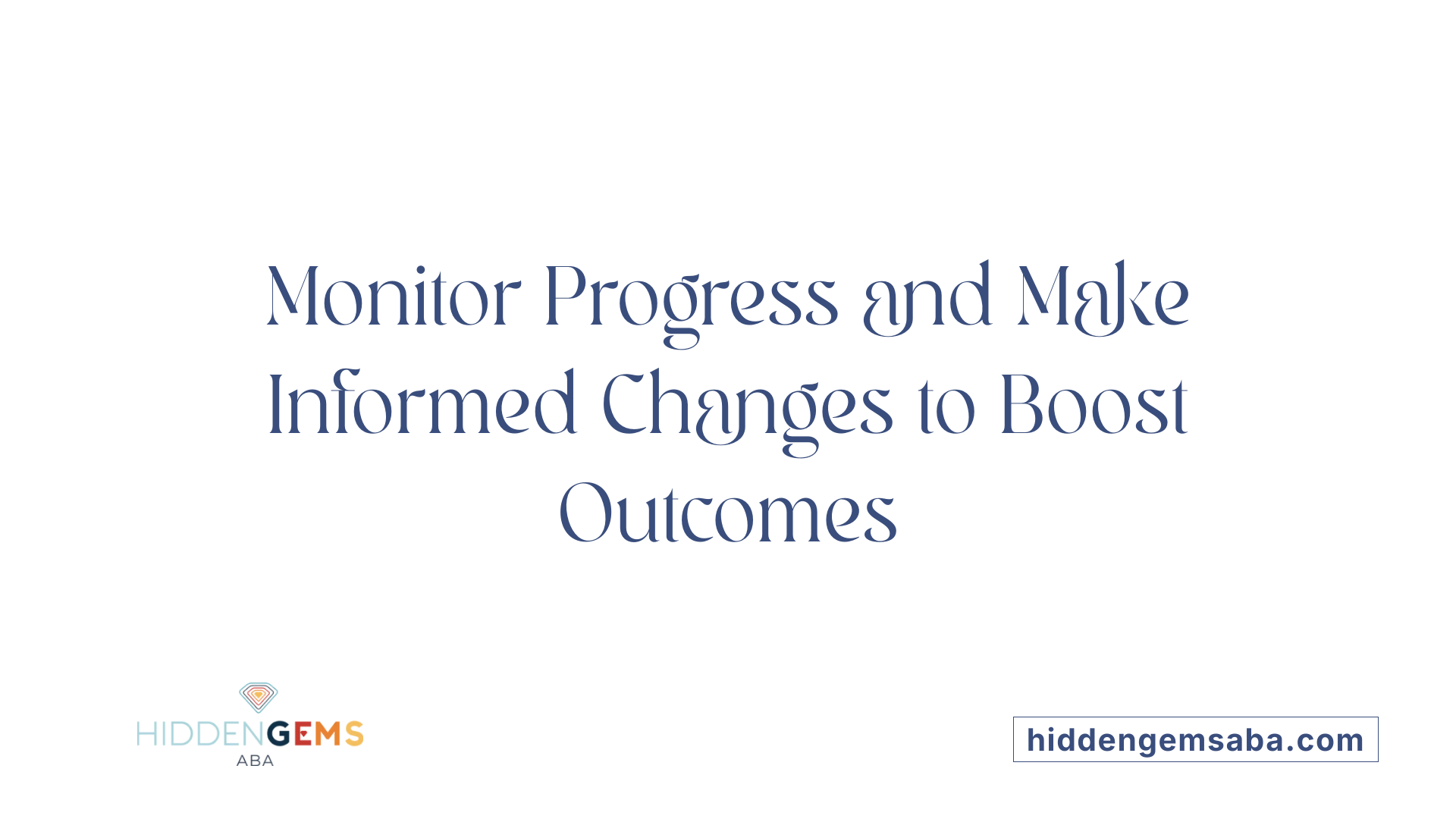Understanding ABA Therapy and Its Role in Autism Support
Applied Behavior Analysis (ABA) therapy is a scientifically supported approach proven to help children with autism develop crucial skills while minimizing challenging behaviors. Setting up a home-based ABA therapy program empowers families to provide consistent, individualized support in a familiar environment, fostering effective learning and meaningful progress for their child. This article outlines the key elements and practical steps for parents seeking to implement such a program, ensuring a solid foundation and ongoing success in home-based ABA therapy.
What is Applied Behavior Analysis (ABA) Therapy and How Does It Help Children with Autism?

What is Applied Behavior Analysis (ABA) therapy and how is it used to support individuals with autism?
Applied Behavior Analysis (ABA) therapy is a science-based treatment grounded in the principles of learning and behavior, especially operant conditioning. It focuses on increasing helpful behaviors like communication, social interaction, and learning skills while reducing problematic behaviors.
Definition and scientific basis of ABA therapy
ABA operates on the core concept of reinforcement—positive and negative—to shape behaviors. It uses the ABC (Antecedent-Behavior-Consequence) model to understand the triggers before a behavior, the behavior itself, and the outcomes that follow, enabling targeted interventions.
Core principles: positive and negative reinforcement, ABC model
The approach emphasizes using consequences to either encourage desired behaviors or discourage unwanted ones. For example, rewarding a child when they use words to express needs helps increase communication skills.
Goals of ABA: increasing beneficial behaviors, reducing problematic behaviors
ABA aims to teach essential skills across communication, socialization, academic tasks, and daily living. It also targets reducing behaviors like aggression or self-injury by identifying their causes and implementing strategic replacements.
Individuals served and the impact on communication, social, learning, and daily living skills
ABA is tailored to individuals of all ages but is most effective when started early. It improves language, attention, memory, social skills, and practical abilities like dressing and eating.
Importance of early intervention and intensive therapy hours
Research shows that early, intensive ABA—often 25 to 40 hours per week for young children—yields significant improvements. Pioneering studies by Ole Ivar Lovaas demonstrated that early, high-intensity ABA helped about 50% of children reach intellectual functioning levels similar to their peers.
Common ABA techniques: Discrete Trial Training (DTT), Pivotal Response Training (PRT), Functional Communication Training (FCT)
ABA uses structured methods such as Discrete Trial Training (DTT), which breaks skills into small steps taught with clear instructions and rewards. Pivotal Response Training (PRT) focuses on critical skills like initiating communication in natural settings. Functional Communication Training (FCT) teaches alternative ways to communicate needs, reducing problematic behaviors.
Research support including Lovaas's findings on early, intensive therapy effectiveness
Strong evidence supports ABA's effectiveness, with endorsements from authorities like the US Surgeon General and American Psychological Association. Continuous assessment and individualized programs, often designed and overseen by Board Certified Behavior Analysts (BCBAs), ensure therapy aligns with each child's goals.
Overall, ABA therapy is recognized as an evidence-based, compassionate approach to helping children with autism develop meaningful skills and improve their quality of life through science-driven techniques and personalized care.
Who Provides Home-Based ABA Therapy and How to Access These Services

Who typically provides ABA therapy services for autism?
ABA therapy is delivered by a specialized team including Board Certified Behavior Analysts (BCBAs) and Registered Behavior Technicians (RBTs). BCBAs are highly trained professionals who design individualized treatment plans, conduct thorough assessments, and supervise therapy programs. RBTs implement daily therapy sessions and work closely with both the child and family under BCBA guidance.
Why is choosing qualified providers important?
Selecting credentialed and experienced providers is critical to ensuring effective therapy. Qualified practitioners use evidence-based ABA techniques such as positive reinforcement, prompting, shaping, and data collection to support meaningful progress. Board certification verifies expertise in designing adaptive interventions tailored to each child's unique needs.
In what settings is ABA therapy provided?
ABA therapy is flexible and offered in multiple environments:
- Home-based programs: Provide a familiar and comfortable setting, enhancing skill generalization and encouraging family involvement.
- Clinic-based therapy: Allows access to specialized equipment and multidisciplinary teams.
- School-based services: Facilitate integration of skills into educational routines.
Many families prefer home-based ABA for its convenience and real-life application.
How can families begin accessing ABA therapy?
- Consult a pediatrician or healthcare provider for evaluation and referral recommendations.
- Research qualified providers offering services in your area.
- Verify insurance coverage, including Medicaid or private plans, as coverage for ABA varies widely.
- Complete an intake evaluation with providers to assess suitability and develop individualized goals.
What about insurance coverage?
Insurance coverage for ABA differs by state and plan. Many private insurances and Medicaid now cover medically necessary ABA therapy, but it's important to review specific policy details and pre-authorization requirements beforehand.
How do professionals, families, and caregivers collaborate?
Successful ABA programs rely on teamwork. Professionals work closely with families to customize therapy, regularly monitor progress, and adjust strategies. Training parents to implement ABA techniques at home is essential for reinforcing skills and achieving lasting improvements. Families often serve as a bridge between providers and other caregivers to maintain consistency across settings.
Why is parent involvement critical?
Parental training helps integrate ABA strategies into daily routines, increasing the speed and generalization of learning. Observing sessions and practicing techniques at home strengthen the child's progress and support transitions to new environments or therapists.
Together, qualified providers, informed families, and collaborative care ensure home-based ABA therapy fulfills its potential to improve outcomes for children with autism.
Key Components for Setting Up a Home-Based ABA Program

Initial comprehensive assessment and goal setting by BCBA
A successful home-based ABA program begins with a thorough assessment conducted by a Board Certified Behavior Analyst (BCBA). This evaluation helps identify the child's specific needs, strengths, and developmental areas, enabling the BCBA to set clear, individualized goals.
Program individualization based on child’s specific needs and strengths
ABA therapy should be tailored to each child. By continuously re-evaluating goals, the program adapts to ongoing progress and changing needs, ensuring the interventions remain effective and relevant.
Structured teaching strategies such as Discrete Trial Training (DTT) and Natural Environment Teaching (NET)
Teaching methods like DTT offer a highly structured way to teach skills through step-by-step instructions and reinforcement. NET complements this by integrating learning opportunities into everyday activities within the home environment, promoting natural skill generalization.
Use of reinforcement and behavioral analysis (ABCs)
ABA focuses on understanding antecedents (triggers), behaviors, and consequences. Therapists use positive and negative reinforcement strategies to encourage desired behaviors while minimizing undesired ones, helping shape learning over time.
Data collection to monitor progress and guide adjustments
Consistent data gathering allows both professionals and families to track progress against goals. This information is vital for making informed adjustments to intervention strategies, ensuring the child's continuous development.
Incorporating functional communication training and behavior management
Programs also include functional communication training (FCT) to help children effectively express needs and feelings, alongside behavior management techniques that address challenging behaviors with positive strategies.
Importance of consistency and routine within the home environment
Maintaining consistent routines and applying ABA strategies throughout the day supports skill retention and helps children feel secure and supported in their learning.
Parents as active participants and observers to reinforce learning
Parents are encouraged to observe sessions to understand the techniques used. Their active participation in reinforcing and generalizing skills at home dramatically enhances therapy effectiveness.
Tools and resources like the ABA Tool Kit by Autism Speaks and Autism Treatment Network
Families can access practical guides such as the free ABA Tool Kit developed by Autism Speaks and the Autism Treatment Network. These resources offer valuable suggestions for supporting ABA programs effectively at home.
Integrating ABA Therapy Into Family Life and Daily Routines

Benefits of Home-Based ABA Therapy
Home-based Applied Behavior Analysis (ABA) therapy offers several advantages for children with autism spectrum disorder (ASD). Conducting therapy in a familiar environment creates comfort, reduces anxiety, and facilitates learning. Families benefit from the therapy’s flexibility, which makes scheduling more manageable and allows sessions to fit naturally into daily life. Active family involvement enhances the effectiveness of treatment by promoting consistency and reinforcing skills between sessions.
Incorporating ABA Into Everyday Activities
ABA therapy's impact is maximized when integrated seamlessly into daily routines. Therapists and families work together to embed learning opportunities into everyday activities like meal times, dressing, and play. This approach encourages the generalization of skills, ensuring that children apply what they learn across various settings.
Naturalistic ABA Approaches: Pivotal Response Training (PRT)
One effective strategy is Pivotal Response Training, a naturalistic ABA method focusing on pivotal skills such as initiating communication and social interaction. PRT occurs in natural environments and uses child-led interactions, making therapy enjoyable and relevant for the child while promoting spontaneous skill use.
Collaboration Between Families and Professionals
Successful ABA therapy requires a collaborative team approach. Parents, behavior analysts, and therapists work closely to tailor intervention goals, monitor progress, and make adjustments. Family members are encouraged to observe and participate in sessions to better understand ABA techniques, facilitating skill reinforcement at home.
Supporting Independence in Daily Living
ABA therapy supports the development of essential life skills, such as dressing, eating, and social interaction, promoting greater independence. Techniques including task analysis and prompting are used to break skills into manageable steps and teach them effectively within daily routines.
Monitoring Progress and Managing Setbacks
Regular data collection and goal tracking help monitor a child's progress and guide modifications. Transitions to new therapists or changes in routines might cause temporary setbacks; families are encouraged to maintain patience and understanding during these periods to support their child’s adjustment.
Parent Training and Sustaining Outcomes
Ongoing parent training is vital for sustaining therapy gains and generalizing skills across environments. Educated caregivers act as crucial partners, reinforcing strategies consistently and supporting their child’s growth beyond formal sessions.
By integrating ABA therapy into family life and everyday activities, children receive consistent, individualized support that fosters meaningful, lasting progress toward independence and improved quality of life.
Supporting Your Child’s Progress: Data, Monitoring, and Adjustment

Why Is Systematic Data Collection Important in ABA Therapy?
Systematic data collection is essential during ABA therapy because it provides an objective way to measure your child's progress. Therapists collect information on behaviors, responses, and skills acquisition to understand what is working and what might need adjustment. This ongoing analysis helps tailor the program to your child’s unique needs.
How Can You Track Goal Achievement and Behavioral Changes?
Tracking involves consistently observing specific behaviors and skills tied to your child’s goals. Data may include frequency, duration, or intensity of a behavior. Regular updates help everyone involved see clear signs of improvement or challenges.
What Happens When Adjustments Are Needed?
When progress plateaus or setbacks occur, treatment plans are modified to better fit your child's evolving needs. Adjustments might mean changing reinforcement strategies, introducing new teaching methods, or revisiting goals to keep therapy effective and encouraging.
Who Oversees Program Fidelity and Modifications?
Board Certified Behavior Analysts (BCBAs) and trained therapists monitor the fidelity of ABA programs. They ensure interventions follow evidence-based protocols and guide any necessary changes to maintain quality and effectiveness.
What Is the Parental Role in Monitoring and Communication?
Parents are encouraged to observe therapy sessions and communicate observations to the team. Their insights help bridge therapy between clinical settings and home, reinforce skill generalization, and contribute to timely adjustments.
How Should Temporary Setbacks or Behavioral Changes Be Handled?
Temporary setbacks, such as difficulty adjusting to new therapists or changes in routine, are normal. Patience, understanding, and continued data monitoring allow the team to respond thoughtfully and support your child through these transitions.
Why Is Continuity of Care and Professional Coordination Important?
Coordinating care among therapists, medical professionals, and caregivers ensures consistency in approaches, clarity of goals, and maximizes therapy benefits. A united team promotes a supportive environment for your child’s growth.
Complementary Supports and Ensuring Safety in Home-Based ABA Therapy
How can related therapies support ABA therapy?
In-home ABA therapy is often complemented by other developmental approaches to provide well-rounded support for individuals with ASD. Speech and language therapy enhances communication skills, including alternative methods like sign language or picture exchange systems. Occupational therapy assists in daily living skills such as dressing and eating, and may include sensory integration techniques to help manage sensory sensitivities common in autism.
Social-relational interventions like DIR ('Floor Time') and Relationship Development Intervention (RDI) focus on improving social skills and emotional connections, often involving parents or peer mentors to strengthen these bonds in natural environments.
Why is it important to avoid unproven alternative treatments?
Families should approach complementary and alternative treatments—such as specialized diets, herbal supplements, chiropractic care, and animal therapy—with caution. These interventions lack robust scientific support, and their safety and effectiveness should be carefully evaluated in consultation with healthcare providers before use.
How do psychological approaches fit into care?
Cognitive-behavioral therapy (CBT) and other psychological methods can address co-occurring mental health issues such as anxiety or depression in individuals with ASD. These approaches help develop coping strategies and promote emotional well-being alongside behavioral and developmental therapies.
What is the role of collaboration among professionals and families?
Effective care involves coordinated efforts among medical professionals, behavior analysts, therapists, families, and caregivers. This multidisciplinary collaboration ensures comprehensive treatment planning, ongoing monitoring of progress, and adjustments to therapy based on data and individual needs.
How is medication used in the context of ASD treatments?
No medications currently treat the core symptoms of ASD. However, pharmaceutical interventions may be prescribed to manage associated challenges like high energy levels, difficulties with focus, or problem behaviors such as head banging. Medical oversight is crucial to weigh benefits against potential side effects.
Why is culturally sensitive and family-centered care essential?
Cultural awareness and respect for family values are vital to providing supportive, individualized care. Tailoring interventions to each family's background and preferences promotes engagement, adherence, and the best possible outcomes for children receiving ABA therapy at home and elsewhere.
Maximizing Success in Your Home-Based ABA Therapy Journey
Establishing a home-based ABA therapy program for your child with autism is a powerful step towards nurturing their growth within a supportive, familiar setting. With the guidance of qualified professionals, a clear, individualized plan, and active parental involvement, families can create an environment where meaningful learning and behavioral progress flourish. Consistent data monitoring and flexibility to adjust strategies ensure the therapy remains effective and responsive to your child’s evolving needs. Complementing ABA with additional supports and prioritizing safety and empathy further enhances outcomes. By embracing a collaborative, informed approach, families lay the groundwork for their child's long-term success and independence.
References
- Treatment and Intervention for Autism Spectrum Disorder
- ABA Therapy at Home: All You Need to Know
- ABA Therapy Archives | Children's Autism Center
- A Practical Guide to Behavioral Therapy for Autism
- 6 ways to assist your child's ABA instructor
- Applied Behavior Analysis (ABA)
- Applied Behavior Analysis (ABA)
- Applied Behavior Analysis in Children and Youth with Autism ...





